TLDR Polycystic ovarian disease symptoms can continue after menopause, making diagnosis and management in older women challenging.
Polycystic ovarian disease (PCOD) is the most common endocrine disorder in women, characterized by a range of symptoms including hirsutism, menstrual irregularities, obesity, insulin resistance, and polycystic ovaries. Although the cause of PCOD is unknown, genetic studies suggest an autosomal dominant transmission with various hormonal disturbances. Symptoms can persist after menopause, making diagnosis in adult perimenopausal women challenging. Diagnosis often involves assessing the fasting glucose insulin ratio (FGI) and other lipid levels. Management focuses on symptom treatment and prevention of long-term complications, with oral contraceptive pills and insulin-sensitizing agents like metformin being common therapies. Long-term follow-up is necessary to evaluate the effectiveness of these treatments, especially in altering metabolic outcomes and managing issues like hair growth. Patient education on associated risks such as diabetes and cardiovascular disease is also crucial.
 1744 citations
,
August 2006 in “The Journal of Clinical Endocrinology and Metabolism”
1744 citations
,
August 2006 in “The Journal of Clinical Endocrinology and Metabolism” Polycystic Ovary Syndrome should be seen mainly as a condition of excess male hormones, with a focus on this in its definition.
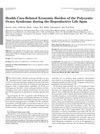 414 citations
,
August 2005 in “The Journal of Clinical Endocrinology and Metabolism”
414 citations
,
August 2005 in “The Journal of Clinical Endocrinology and Metabolism” Polycystic ovary syndrome costs the U.S. over $4 billion a year, mainly from treating related health issues.
 4809 citations
,
January 2004 in “Fertility and Sterility”
4809 citations
,
January 2004 in “Fertility and Sterility” The 2003 consensus updated PCOS diagnosis criteria and highlighted increased risks of diabetes and heart disease for those affected.
55 citations
,
March 2000 in “American journal of clinical dermatology” Antiandrogens, particularly flutamide and CPA, are most effective for treating hirsutism, with long-term use needed for best results.
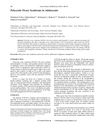 May 2010 in “Current Women's Health Reviews”
May 2010 in “Current Women's Health Reviews” The document concludes that early diagnosis and treatment of PCOS in teenagers is important for managing symptoms and preventing long-term health problems.
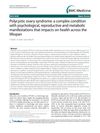 926 citations
,
June 2010 in “BMC Medicine”
926 citations
,
June 2010 in “BMC Medicine” Polycystic ovary syndrome is a complex condition that affects women's mental, reproductive, and metabolic health throughout their lives.
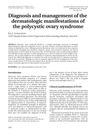 97 citations
,
July 2006 in “Dermatologic therapy”
97 citations
,
July 2006 in “Dermatologic therapy” The document concludes that accurate diagnosis and personalized treatment are important for skin problems in women with PCOS.
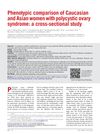 28 citations
,
April 2013 in “Fertility and Sterility”
28 citations
,
April 2013 in “Fertility and Sterility” Caucasian and Asian women with PCOS generally show similar symptoms, except Asian women have less chest hair.
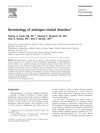 67 citations
,
July 2006 in “Clinics in Dermatology”
67 citations
,
July 2006 in “Clinics in Dermatology” Androgens cause skin issues like acne and hair growth in women, often due to PCOS, and can be treated with medication and lifestyle changes.
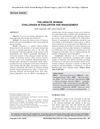 22 citations
,
August 2011 in “Endocrine Practice”
22 citations
,
August 2011 in “Endocrine Practice” Most hirsutism cases are due to PCOS, and treatment focuses on lowering testosterone and blocking its effects.








